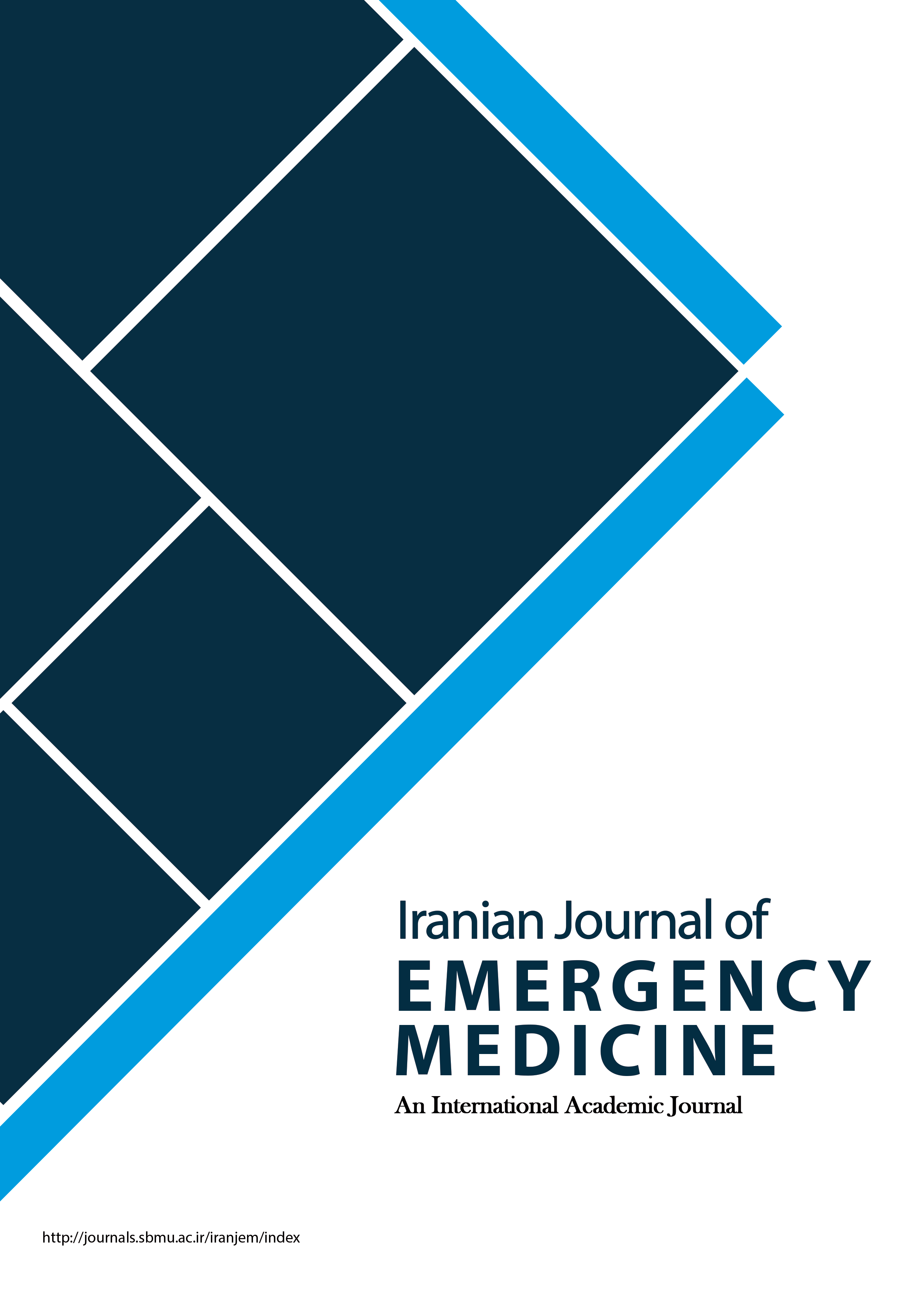Discharge against Medical Advice in Emergency Department
Iranian Journal of Emergency Medicine,
Vol. 2 No. 3 (2015),
29 July 2015,
Page 110-115
https://doi.org/10.22037/ijem.v2i3.9038
Introduction: Discharge against medical advice (AMA) is the patient voluntarily leaving the hospital against the physician’s advice, which might indicate a problem in the hospital or the quality of care in it. This study aimed to evaluate the frequency and reasons of AMA in the emergency department (ED). Methods: The present cross-sectional study evaluated the reasons of AMA in the ED of Poursina Hospital, Rasht, Iran. The studied population included all the discharged AMA patients from April 2012 to March 2013. Demographic data and data regarding insurance status, insurance provider, number of hospitalization days, admission shift (morning, evening, night), type of disease or reason for referral (multiple trauma, surgery, orthopedics, neurosurgery, neurology), probable readmission in the next 15 days, and reasons for discharge AMA were gathered using a pre-designed checklist. Data were analyzed using SPSS version 20 and chi square test. p < 0.05 was considered significant. Results: 3367 patients were admitted to ED over the course of the study, 1060 (31.4%) of which were discharged AMA (62.92% male). Most discharged AMA patients were married and 20-30 years old. Most had neurological problems and surgery, and were referred in the evening or night shifts. 62.17% of the patients were insured by Ta’min Ejtema’i insurance company. The reasons for discharge AMA was patient related in 1009 (95.19%) cases, medical staff related in 35 cases (3.3%), and hospitalization related in 16 (1.51%) cases. Readmission in the next 15 days was seen in 9.06% of those who were discharged AMA. Conclusion: Based on the results of the present study, most cases of discharge AMA were patient related. Increasing the knowledge of the patients regarding probable consequences, designing outpatient management programs for these patients and improving the quality of medical services can help decrease discharge AMA cases.



